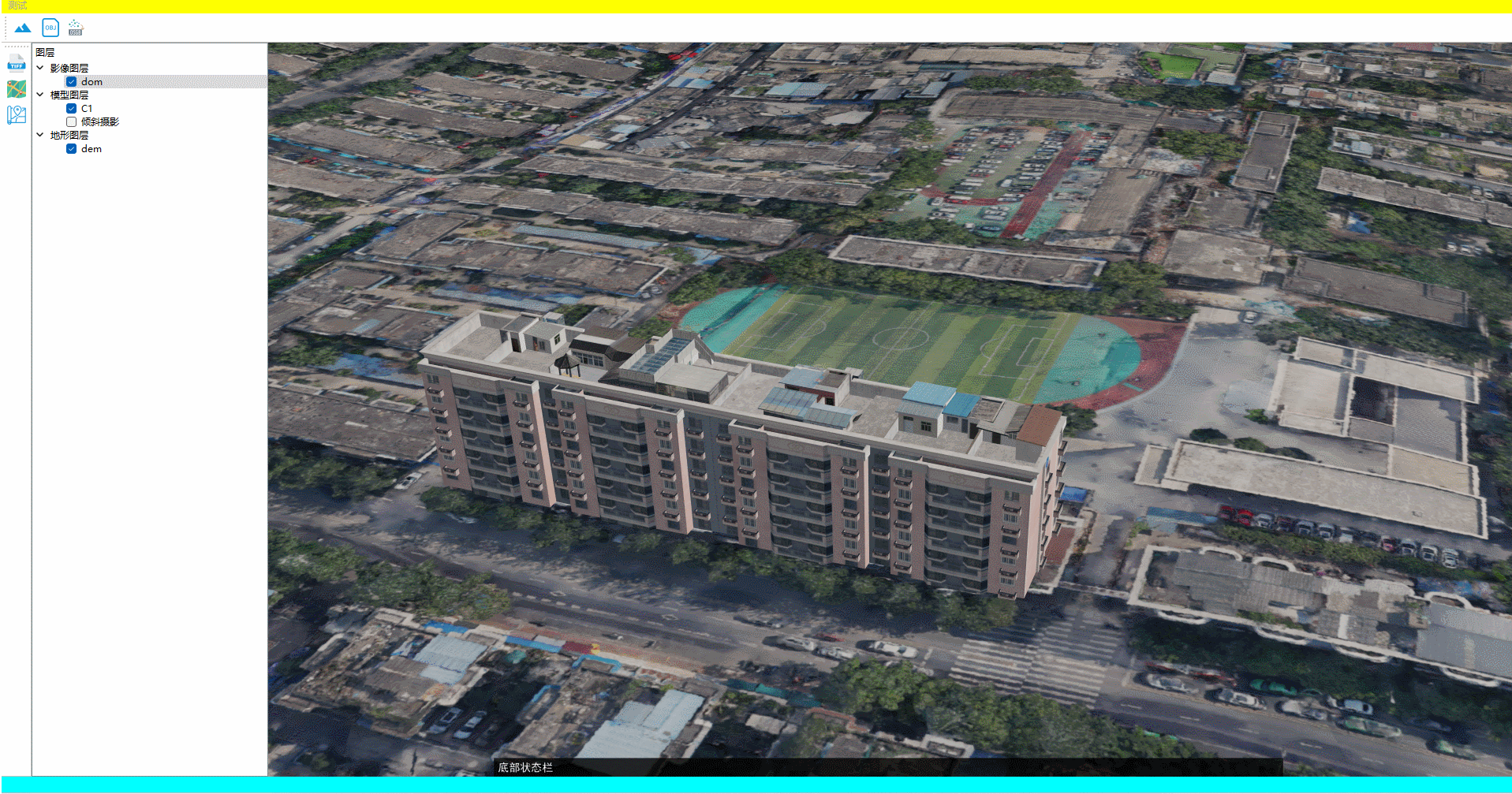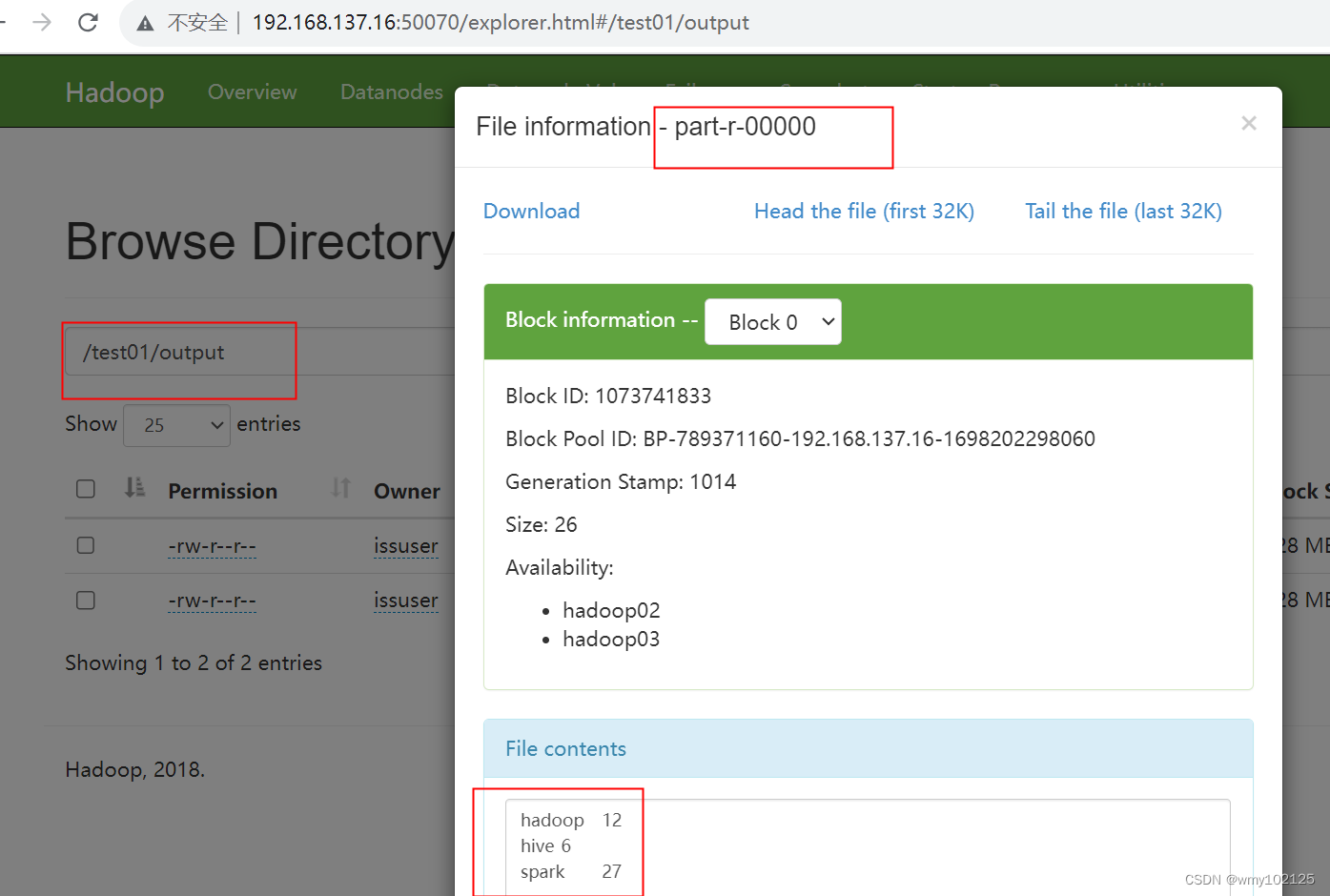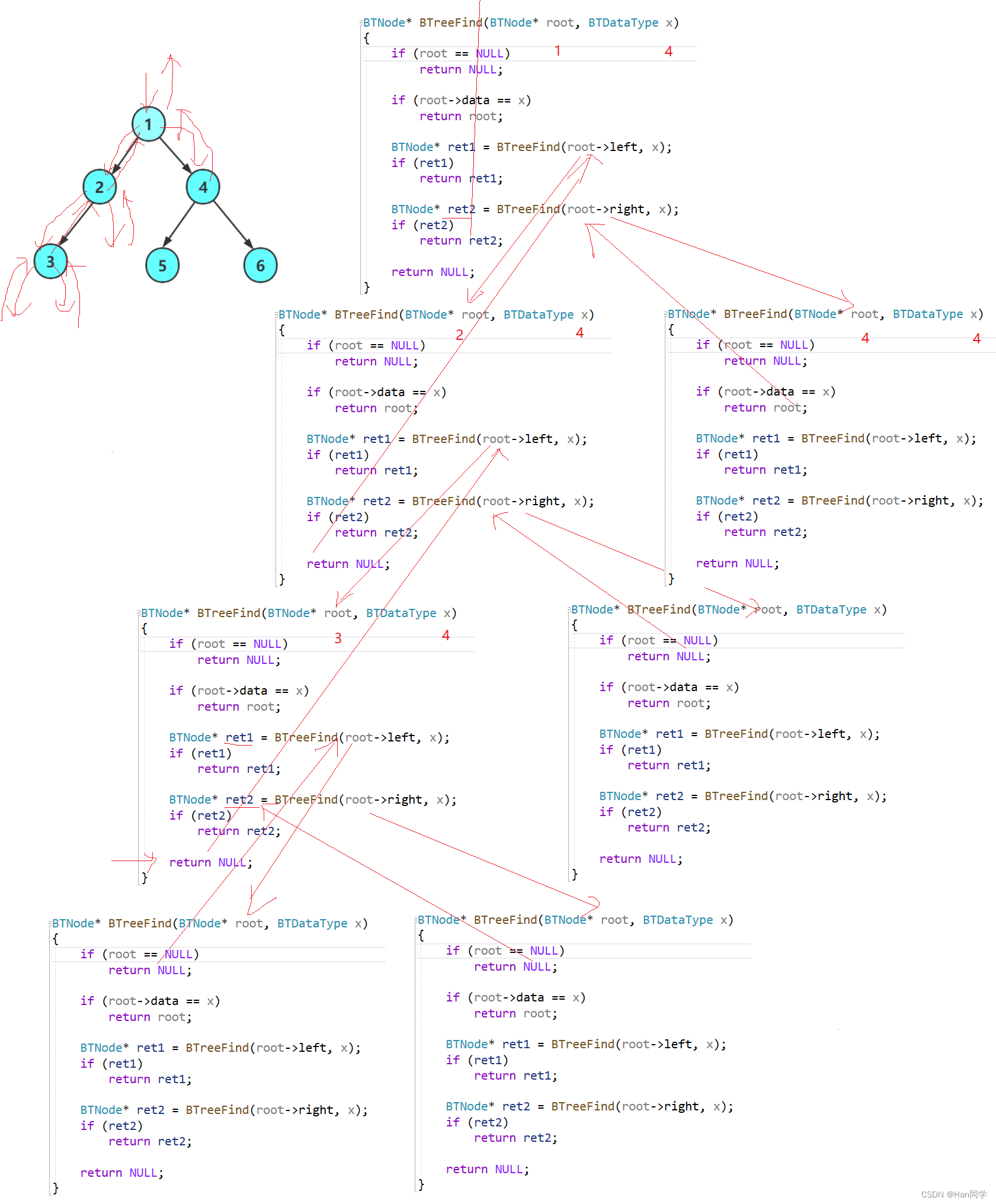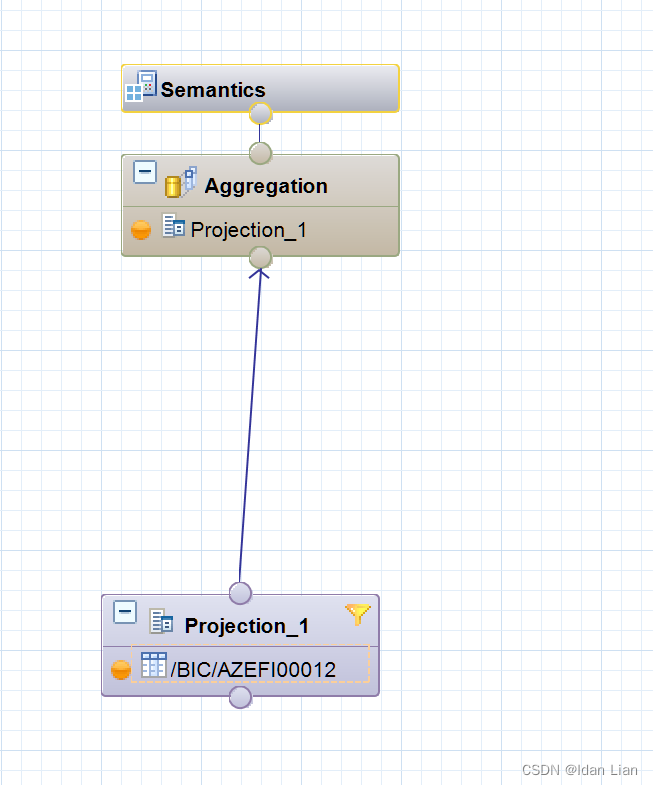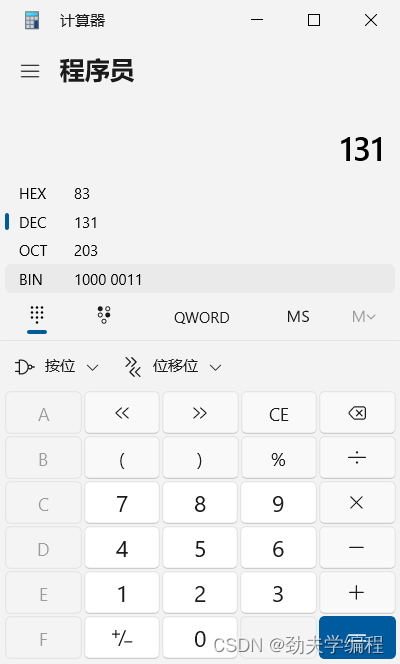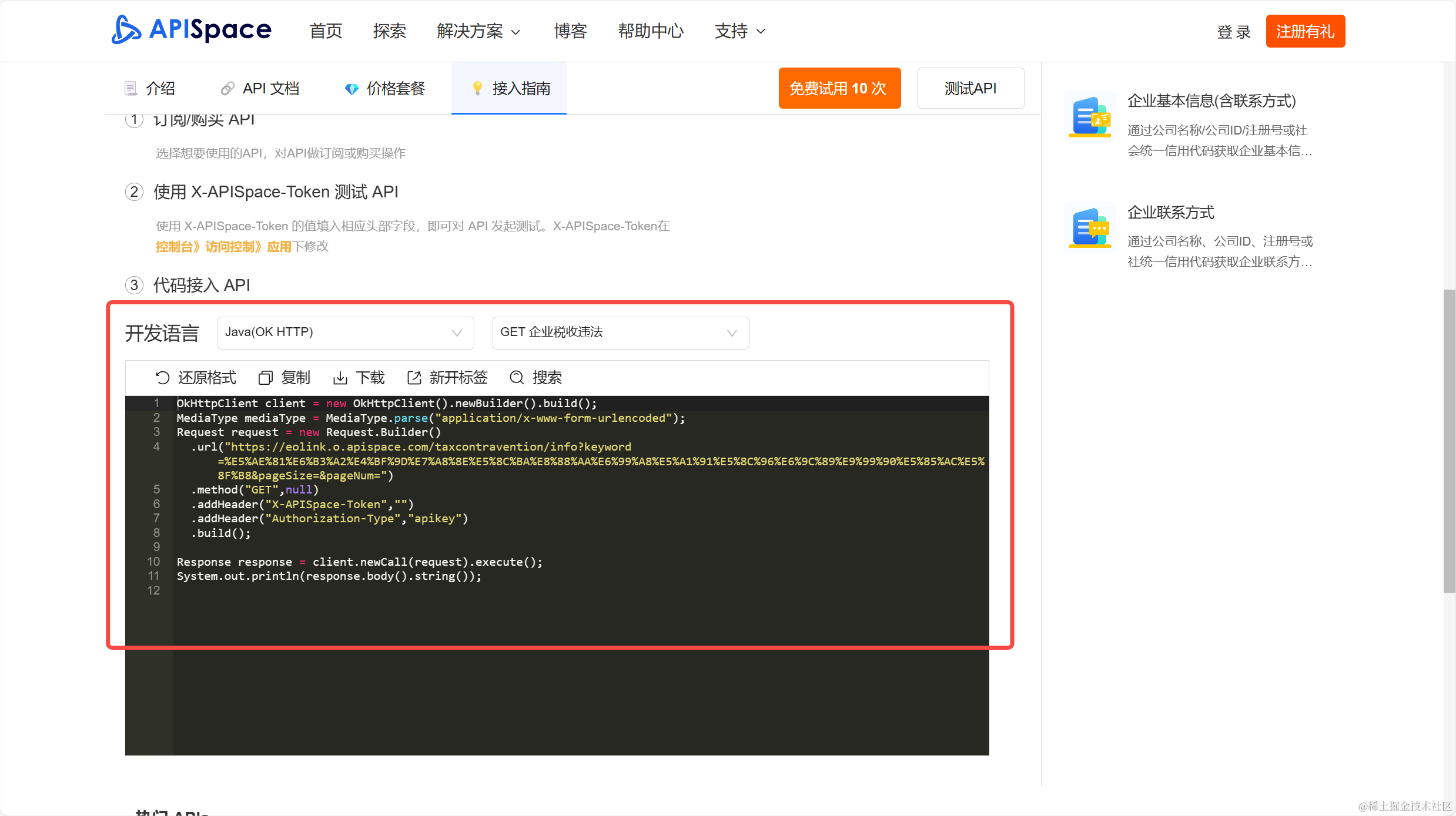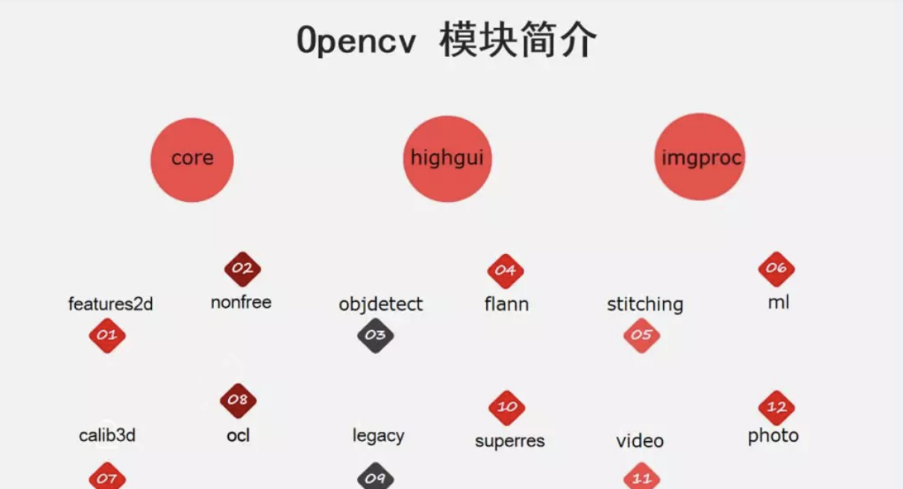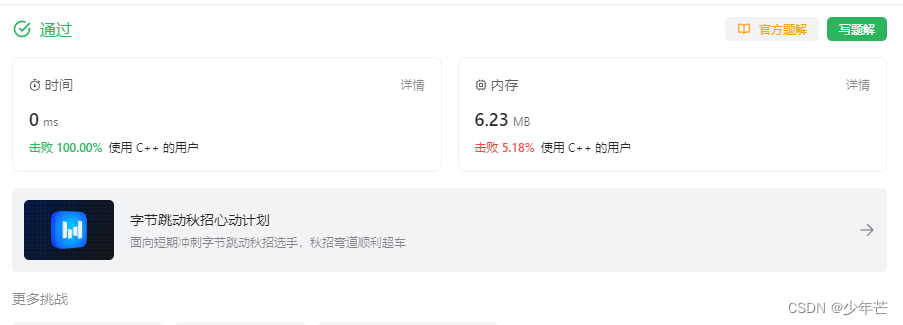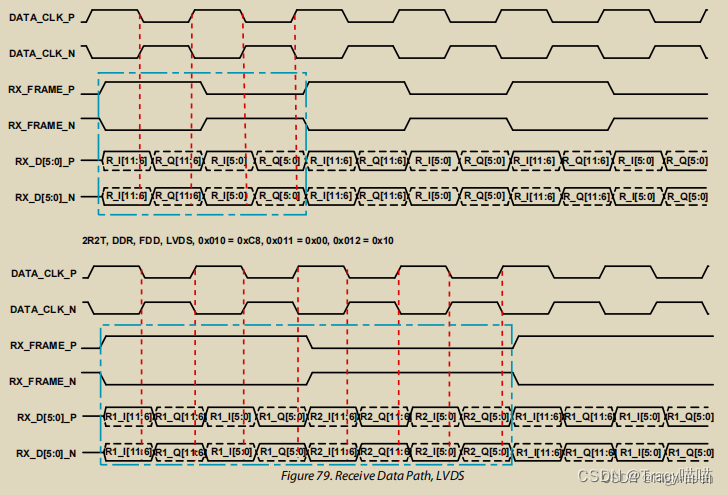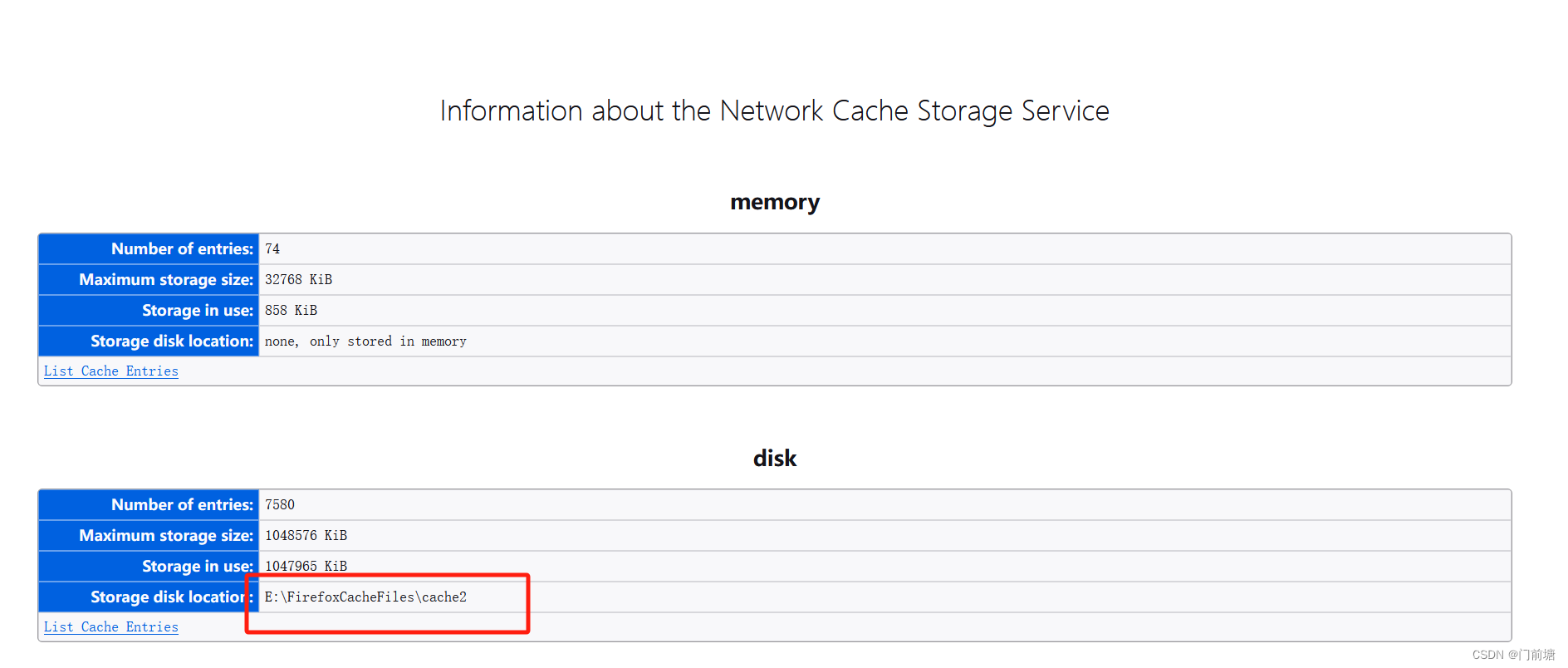文章目录
- 状态的表达
- 例题1
- 题解
- 1 终止条件:有一个数位为4
- 2 状态的改变:a表示十位数,b表示个位数
- 3 其他设置
- 例题2 力扣773 滑动谜题
- Java
- C++
状态的表达
例题1
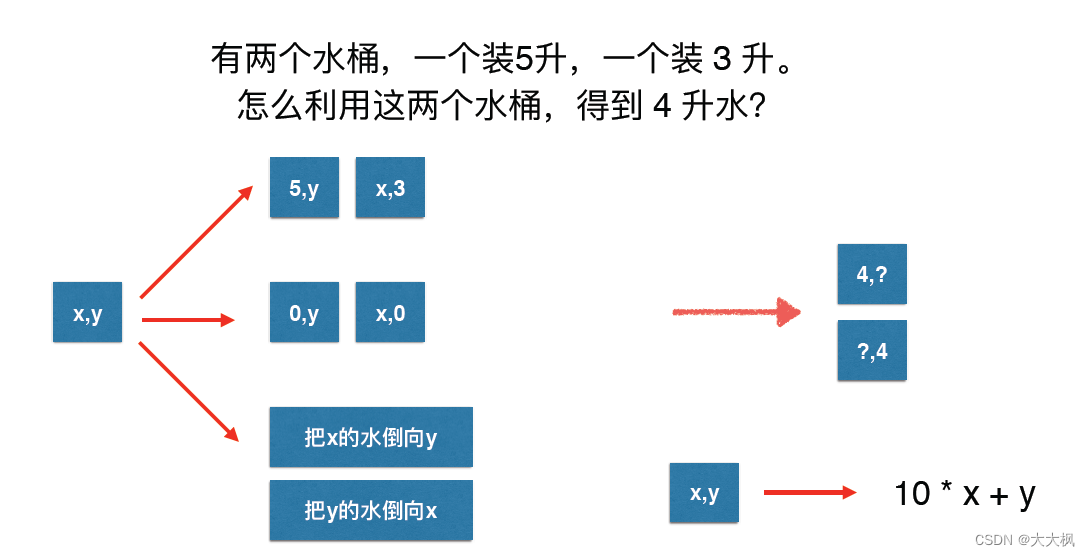
从初始的(x,y)状态,到最后变成(4,?)或者(?,4).
本道题对于(x,y)的状态,可以使用10x+y进行表达,也就是变成了一个数字,分别放在不同的数位上。
但是本状态的表示方法不适用单个数组超过9的,因为一个数位只能表示0-9.。
涉及思想:状态压缩
题解
1 终止条件:有一个数位为4
if(next / 10 == 4 || next % 10 == 4) {
end = next;
return;
}
2 状态的改变:a表示十位数,b表示个位数
重复添加满水不影响结果
a = cur / 10, b = cur % 10;
要达到(4,?)或者(?,4)的办法
- a桶灌满5升水
- b桶灌满3升水
- a桶的水倒掉
- b桶的水倒掉
- a桶中的水倒进b桶中 --> 最多能倒a升,还能倒b桶剩余空闲容量=(3-b桶当前容量)
- b桶中的水倒进a桶中
nexts.add(5 * 10 + b);
nexts.add(a * 10 + 3);
nexts.add(a * 10 + 0);
nexts.add(0 * 10 + b);
int x = Math.min(a, 3 - b);
nexts.add((a - x) * 10 + (b + x));
int y = Math.min(b, 5 - a);
nexts.add((a + y) * 10 + (b - y));
3 其他设置
- 访问数组用于记录访问过的状态
boolean[] visited = new boolean[100];
- 队列用于记录访问的每个节点的状态
Queue<Integer> queue = new LinkedList<>();
- 记录上一个状态
pre = new int[100];
- 记录状态变化
- 首先要把pre数组填好,根据pre数组将遍历的过程从最终结果向前找初始状态。最终再翻转链表。
- 做标记 设置end = -1
如果end倒最后还是-1,说明问题没有解。
import java.util.*;
import java.util.ArrayList;
public class WaterPuzzle {
private int[] pre;
private int end = -1;
public WaterPuzzle(){
Queue<Integer> queue = new LinkedList<>();
boolean[] visited = new boolean[100];
pre = new int[100];
queue.add(0);
visited[0] = true;
while (!queue.isEmpty()){
int cur = queue.remove();
int a = cur / 10, b = cur % 10;
// max a = 5, max b = 3
ArrayList<Integer> nexts = new ArrayList<>();
nexts.add(5 * 10 + b);
nexts.add(a * 10 + 3);
nexts.add(a * 10 + 0);
nexts.add(0 * 10 + b);
int x = Math.min(a, 3 - b);
nexts.add((a - x) * 10 + (b + x));
int y = Math.min(b, 5 - a);
nexts.add((a + y) * 10 + (b - y));
for(int next: nexts)
if(!visited[next]){
queue.add(next);
visited[next] = true;
pre[next] = cur;
if(next / 10 == 4 || next % 10 == 4) {
end = next;
return;
}
}
}
}
public Iterable<Integer> result(){
ArrayList<Integer> res = new ArrayList<>();
if(end == -1) return res;
int cur = end;
while(cur != 0){
res.add(cur);
cur = pre[cur];
}
res.add(0);
Collections.reverse(res);
return res;
}
public static void main(String[] args){
System.out.println((new WaterPuzzle()).result());
}
}
例题2 力扣773 滑动谜题
Java
/// Leetcode 773
import java.util.ArrayList;
import java.util.Queue;
import java.util.LinkedList;
import java.util.HashMap;
public class Solution {
private int[][] dirs = {{-1, 0}, {0, 1}, {1, 0}, {0, -1}};
public int slidingPuzzle(int[][] board) {
Queue<String> queue = new LinkedList<>();
HashMap<String, Integer> visited = new HashMap<>();
String initalState = boardToString(board);
if(initalState.equals("123450")) return 0;
queue.add(initalState);
visited.put(initalState, 0);
while(!queue.isEmpty()){
String cur = queue.remove();
ArrayList<String> nexts = getNexts(cur);
for(String next: nexts)
if(!visited.containsKey(next)){
queue.add(next);
visited.put(next, visited.get(cur) + 1);
if(next.equals("123450"))
return visited.get(next);
}
}
return -1;
}
private ArrayList<String> getNexts(String s){
int[][] cur = stringToBoard(s);
int zero;
for(zero = 0; zero < 6; zero ++)
if(cur[zero / 3][zero % 3] == 0)
break;
ArrayList<String> res = new ArrayList<>();
int zx = zero / 3, zy = zero % 3;
for(int d = 0; d < 4; d ++){
int nextx = zx + dirs[d][0], nexty = zy + dirs[d][1];
if(inArea(nextx, nexty)){
swap(cur, zx, zy, nextx, nexty);
res.add(boardToString(cur));
swap(cur, zx, zy, nextx, nexty);
}
}
return res;
}
private boolean inArea(int x, int y){
return x >= 0 && x < 2 && y >= 0 && y < 3;
}
private void swap(int[][] board, int x1, int y1, int x2, int y2){
int t = board[x1][y1];
board[x1][y1] = board[x2][y2];
board[x2][y2] = t;
}
private String boardToString(int[][] board){
StringBuilder sb = new StringBuilder();
for(int i = 0; i < 2; i ++)
for(int j = 0; j < 3; j ++)
sb.append(board[i][j]);
return sb.toString();
}
private int[][] stringToBoard(String s){
int[][] board = new int[2][3];
for(int i = 0; i < 6; i ++)
board[i / 3][i % 3] = s.charAt(i) - '0';
return board;
}
public static void main(String[] args){
int[][] board = {{1, 2, 3}, {4, 0, 5}};
System.out.println((new Solution()).slidingPuzzle(board));
}
}
C++
class Solution {
public:
int slidingPuzzle(vector<vector<int>>& board) {
//记录最终状态
const string sol = "123450";
const int m = 2, n = 3;
const int dirs[4][2] = {{-1, 0}, {0, 1}, {1, 0}, {0, -1}};
//记录初始状态,使用字符串记录
string init;
for (auto &line: board) {
for (auto &grid: line) {
init.push_back('0' + grid);
}
}
//构造队列,并初始化
queue<string> q{{init}};
//设置unordered_set,记录访问状态
unordered_set<string> vis{{init}};
//记录步数
int ans = 0;
//开始BFS
while (!q.empty()) {
int size = q.size();
for (int i = 0; i < size; ++i) {
auto &p = q.front();
//出口
if (p == sol) {
return ans;
}
//先找0号的位置
int idx0 = p.find('0');
//四联通拓展
for (int a = 0; a < 4; ++a) {
//求0号元素的二维新坐标
int nx = idx0 / n + dirs[a][0], ny = idx0 % n + dirs[a][1];
//求0号元素映射到一维数组中的坐标
int idx1 = nx * n + ny;
//判断边界
if (nx >= 0 && nx < m && ny >= 0 && ny < n) {
//交换两个元素的位置
swap(p[idx0], p[idx1]);
//如果当前状态没有测试过
if (!vis.count(p)) {
//加入访问数组
vis.insert(p);
//入队
q.push(p);
}
//恢复原来的状态,继续交换位置然后将状态入队列
swap(p[idx0], p[idx1]);
}
}
q.pop();
}
//对头出队的时候,开始移动到下一个状态,因此步数+1
++ans;
}
return -1;
}
};
